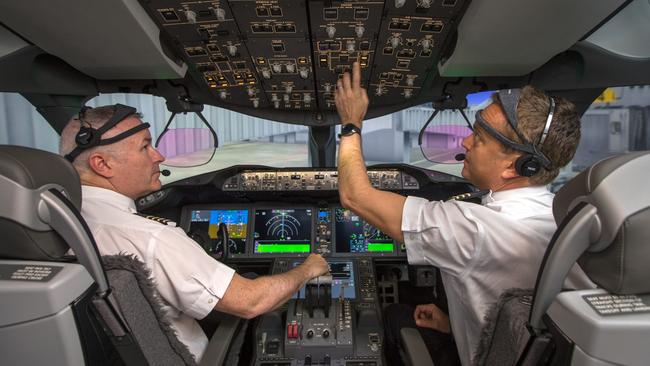Pilots warn Qantas board about the danger of fatigue risks
Qantas pilots have told the airline’s board that tests on ultra-long-range flights have revealed safety concerns.

A new FRMS for Qantas crew has been ticked off by the Civil Aviation Safety Authority, but there is still no defined system for ultra-long-range (ULR) flights such as those planned under the airline’s Project Sunrise.
For Qantas to operate services between Australia’s east coast and cities such as London and New York, pilots’ flight duty times will need to be extended to 23 and a half hours, up from the current 20 hours.
In a letter to the board’s health, environment, safety and security committee chairman Tony Tyler, Australian and International Pilots Association president Mark Sedgwick said safety must come ahead of the commercial benefits of operating ULR flights.
“AIPA is concerned that Qantas is fast-tracking the establishment of an FRMS in order to allow certainty over an investment decision for the delivery of its A350 aircraft order,” Mr Sedgwick writes in the letter. “This has the potential to undermine safety and threaten Qantas’ reputation.”
He writes that a fatigue study conducted on 18-hour Perth-London flights was an AIPA initiative, and they had shared their concerns about the findings with the airline.
Mr Sedgwick acknowledges that research was also undertaken on three Project Sunrise test flights but said those services “did not replicate real-world flying conditions”.
“As chair of the safety committee you would be aware that despite the limited data, the tests raised very real safety concerns which require urgent consideration,” he writes.
“Pilots operate in a working environment which requires a high level of judgment and decision-making, operating between time zones and managing interrupted periods of sleep.
“ULR flying tests the technical limits of aircraft and the ability of crews to operate effectively over long periods.”
A CASA spokesman confirmed the regulator’s approval of the new FRMS for Qantas, but emphasised that it did not cover proposed ULR flights.
“These will require changes to the new fatigue risk management system and require CASA approval prior to commencement,” he said.
The approved FRMS followed a 12-month trial which was “carefully monitored by CASA”.
“CASA has assessed the Qantas fatigue risk management system as robust and capable of managing fatigue across the airline’s current operational approvals,” the spokesman said.
Mr Sedgwick said the FRMS was an important issue for pilots, and therefore was considered very much separate to their ongoing long-haul enterprise agreement negotiations.
Qantas chief pilot Richard Tobiano said the new FRMS moved away from a “one-size fits all approach” to performance-based systems.
“We use data, fatigue science and medical advice to create rosters that give pilots enough rest between their days of flying or ensuring that they get appropriate rest while they are flying longer flights,” said Captain Tobiano. “Like any system, we’ll continue to make improvements as we gather more and more data.”




Qantas pilots have told the airline’s board there are “potential safety issues” regarding the operation of ultra-long-range flights, as they fight for a more robust fatigue risk management system (FRMS).